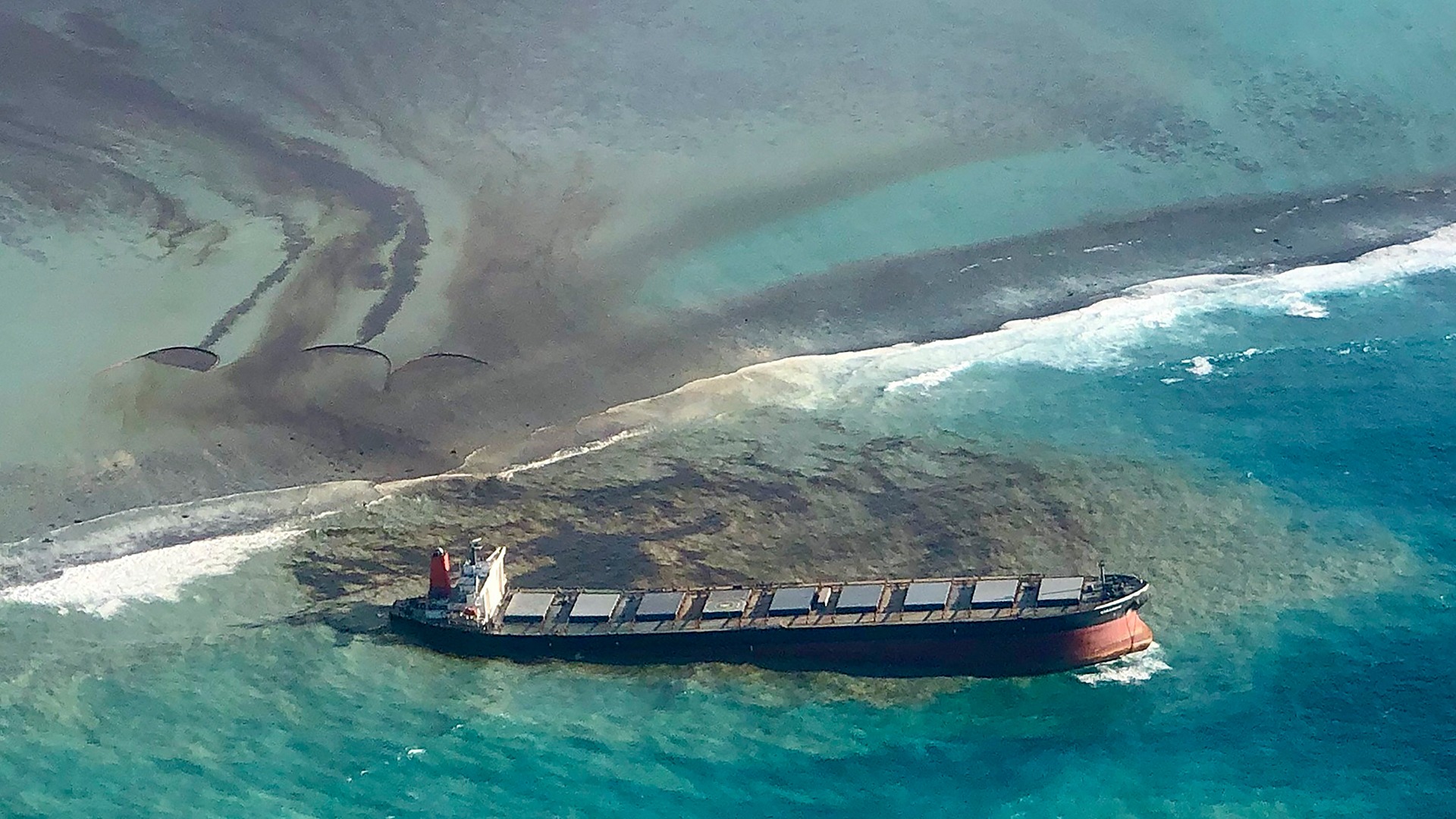Mauritius Oil Spill disaster
a black plague of oil is contaminating the mangroves
A major environmental disaster is currently ongoing on the Indian Ocean island country
By Katja Graf | WWF-Germany and Save Our Mangroves Now!
The Japanese freighter ‘MV Wakashio’ ran aground on Mauritius’ coral reefs on Sunday 25 July. It remained stuck and started breaking apart 13 days later on Thursday 6 August, releasing 1000 of its estimated 4000 tons of heavy bunker fuel into the pristine waters of the Indian Ocean as a large gash opened on the side of the vessel.
The location of the grounding is close to two internationally protected UNESCO Ramsar wetland sites along the main island’s coastal areas south of the bay of Mahebourg: the Blue Bay Marine Park, a critical Ramsar site designated in 2008 and known for its exceptional coral diversity, and the Pointe d’Esny wetland. The marine park is a complex habitat with coral reefs, mangroves, seagrass, lagoons, estuaries, and beaches. Also under threat is a small coral atoll off the coast of the bay of Mahebourg, Ile Aux Aigrettes, that has been set aside from human residence in order to recover Mauritius’ rich and unique biodiversity.
With the Wakashio, it is not the cargo but the fuel that contaminates the coast. Like almost all merchant ships, the Japanese ship had bunkered (stored) heavy oil as fuel. The fuel is a cheap and particularly dirty sulphurous blend that requires disposal as hazardous waste when on land. In contrast to diesel, heavy oil is far less volatile, i.e. the greasy mixture does not evaporate and the full toxic load is released into the marine environment.

© Eric Villars / AP
The composition of the different coasts will also determine how easy it will be to clean-up the oil. While sandy beaches are comparatively easy to clean by removing the soil, mangroves and protected freshwater areas are much more challenging to clean and are also at risk in Mauritius.
Mangrove forests are characterized by a particularly high species diversity, both in the trees and in the surrounding soil and water, so oil can be extremely damaging. Mangroves are highly dependent on their branching roots to take in gasses and nutrients that the trees need to live and breathe but oil literally blocks out air the mangroves need by coating roots, sticking them together and suffocating the plants. This causes many young fish to lose their vital protective “nursery” habitat.
Mussels, worms and snails live in the silt of the mangrove forests and through burrowing, carry the oil into deeper layers of soil. In this deep soil of mangrove forests, there is minimal to no oxygen. When oil reaches that depth, microorganisms that need oxygen to break down oil, can’t do so. This means that the oil remains to poison animals and plants for many years.
It is therefore no exaggeration to speak of the worst environmental disaster in the history of the country. The sinking of the freighter hit not only nature but also the people who live from fishing and tourism. By losing intact mangrove ecosystems through this disaster, the people of Mauritius also lose an important protective barrier against storms and floods.
WWF Madagascar Country Director, Nanie Ratsifandrihamanana reports:
“This oil spill is a severe threat to critical ecological resources, including coral reefs, fish, and other coastal and marine life of the southeast coast of Mauritius. In addition to the negative environmental impact on coastal and marine life, the oil spill may affect about 2,300 artisanal fishermen and women and the 1.5% of Mauritius’ GDP derived from the fishing industry. WWF calls on regional cooperation in enhancing the development of blue economy strategies and interventions that will help realize sustainable development.”
The country can use any help, but it may already too late to protect some areas. For Mauritius, the main goal is to limit the consequences of the disaster as much as possible. International aid and technical assistance from abroad can contribute to this. The UN and France, whose navy is stationed on the neighboring island of Reunión, have offered assistance. Even more crucial, however, is to ensure that disasters such as this one do not happen again, given the continuing growth in shipping traffic. 4,000 tons is a lot, even small quantities can cause considerable damage, but it is only a fraction of what big tankers load. They often transport 100,000 tons across the oceans!
Questions are being asked about how this happened, could it have been prevented, and more importantly what steps should now be taken to prevent a similar tragedy from occurring anywhere else in the world. The most important takeaway should be to prioritize people and planet, above polluting fossil fuels. A ban on the particularly poisonous heavy oil would be an important step. In addition, increased safety standards must be introduced in particularly sensitive regions, such as the stationing emergency crews who–unlike the current spill–can intervene quickly, satellite-based monitoring of traffic, and compulsory pilotage on sensitive routes.
Update on 13 August: Most fuel oil that had remained in the ship has now been successfully pumped out. However, oil that had already leaked out into the ecosystem will need extensive effort to clean-up and the ship will still inevitably break up into the local waters of Mauritius.